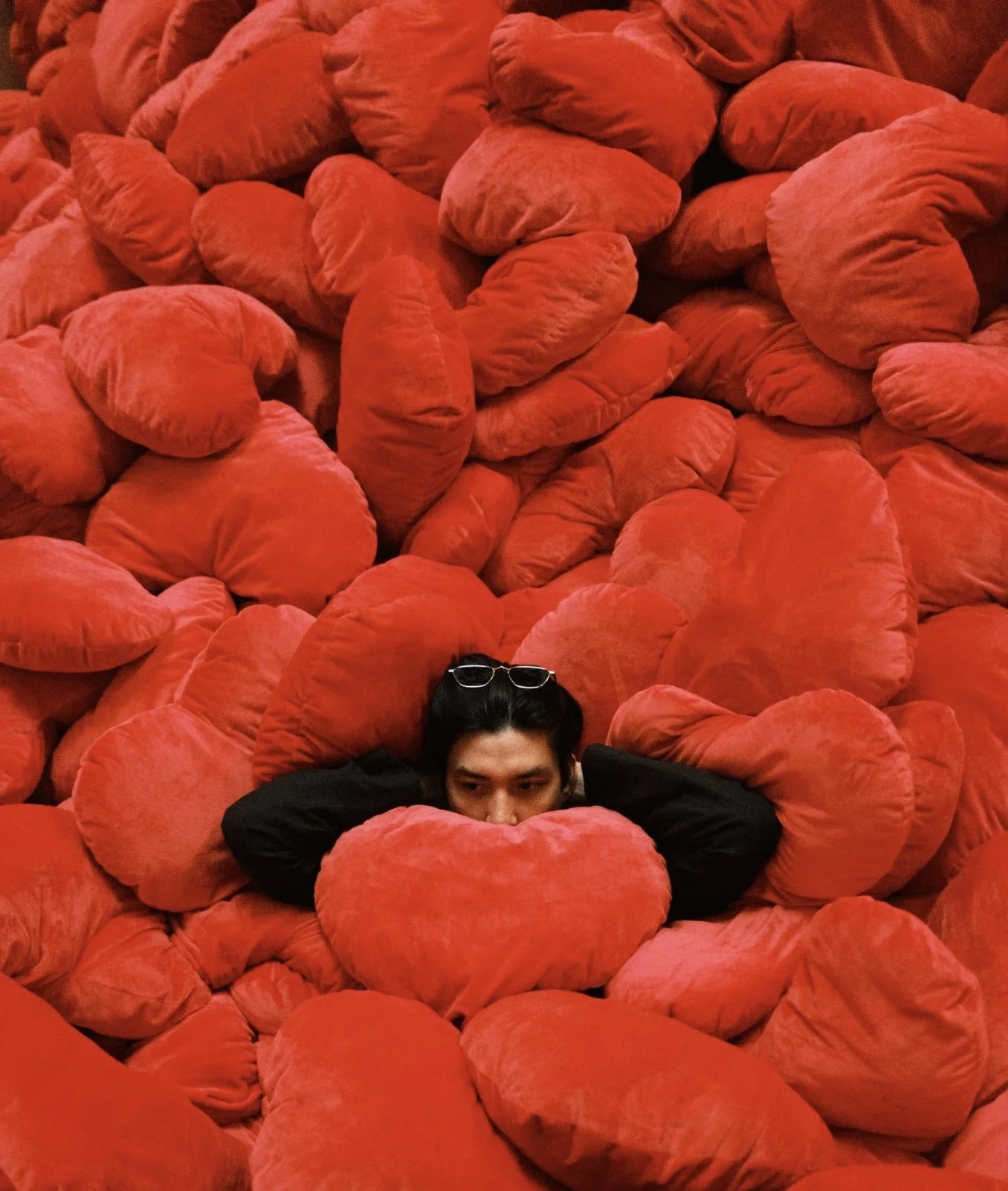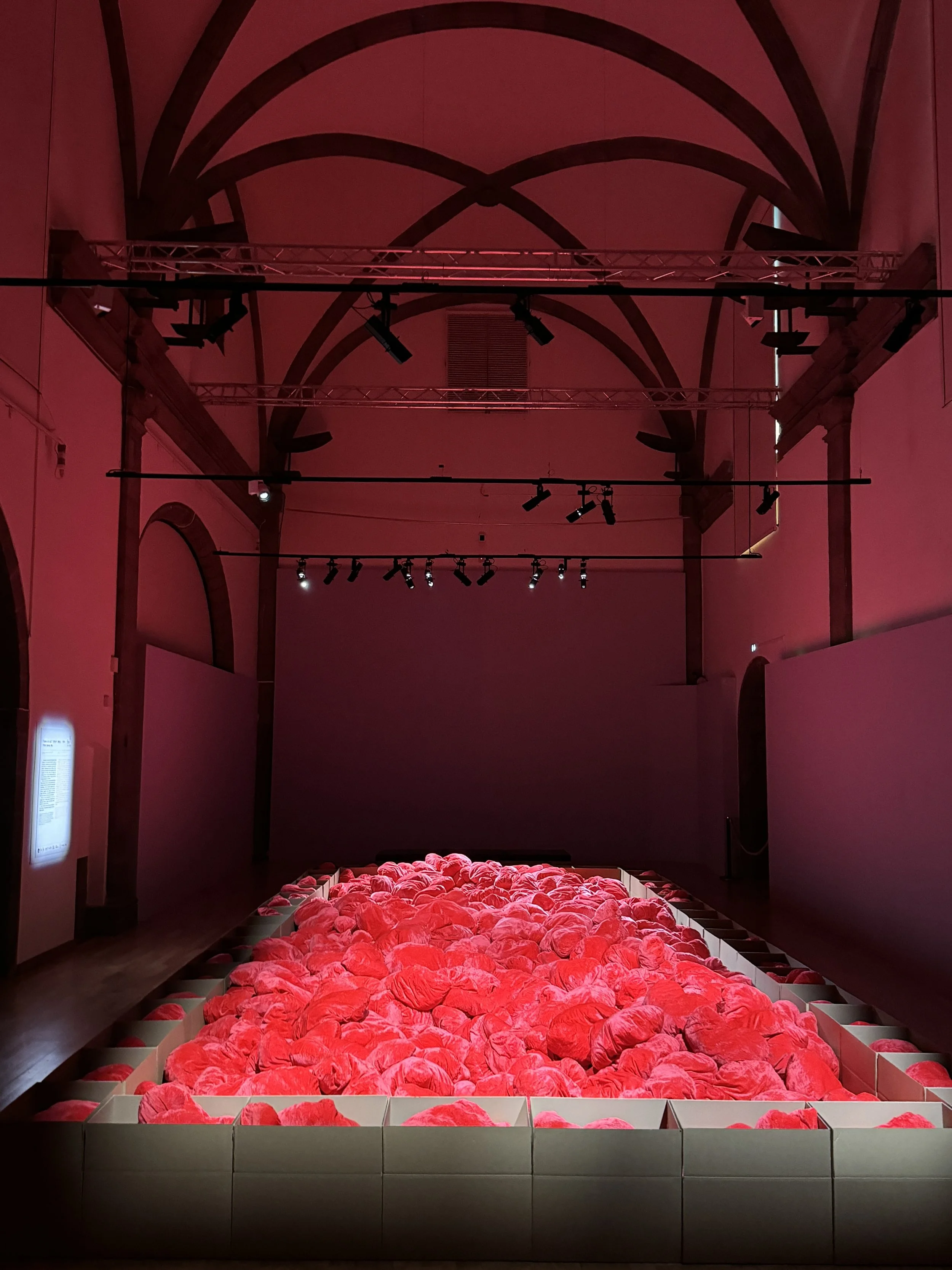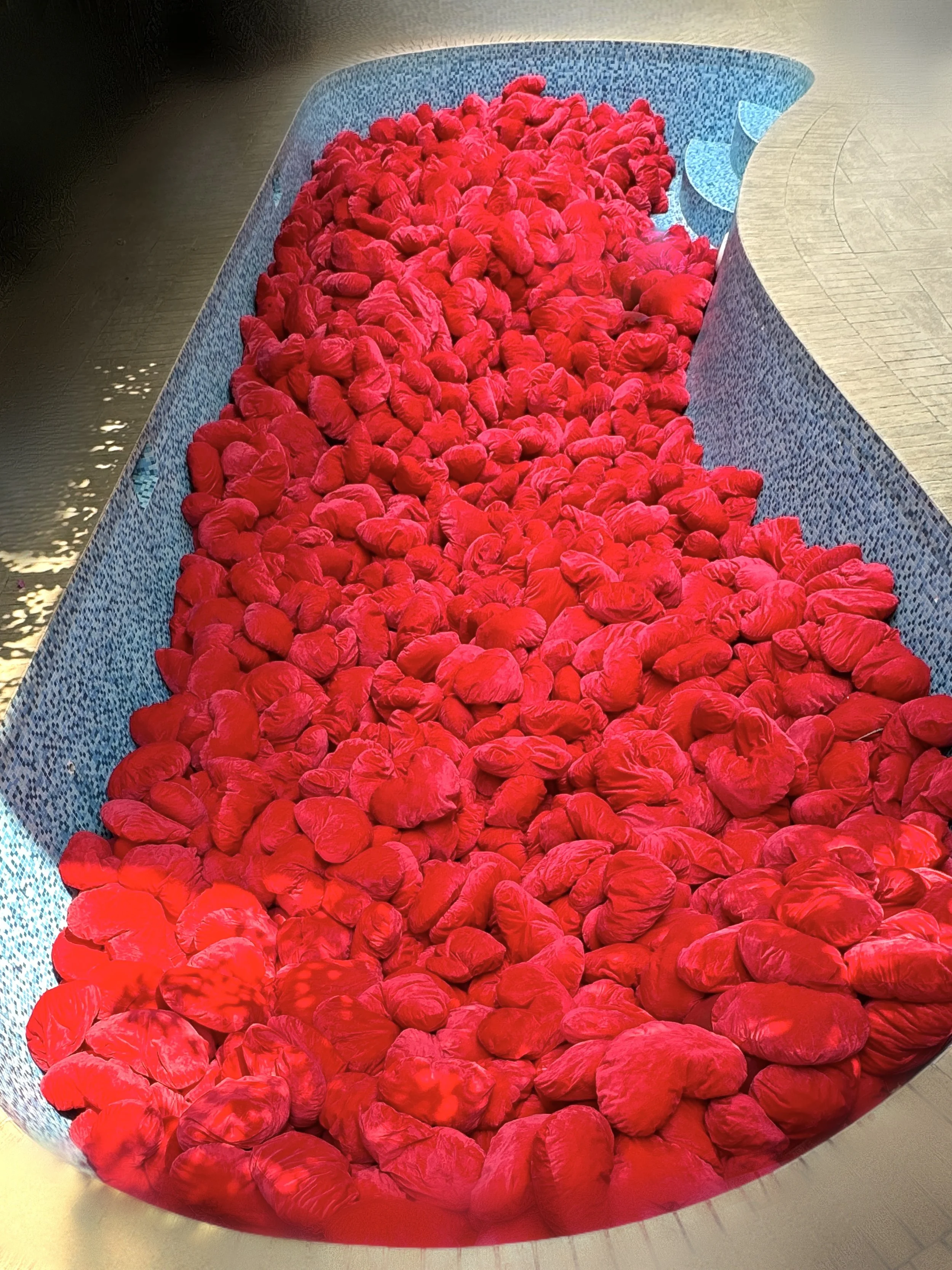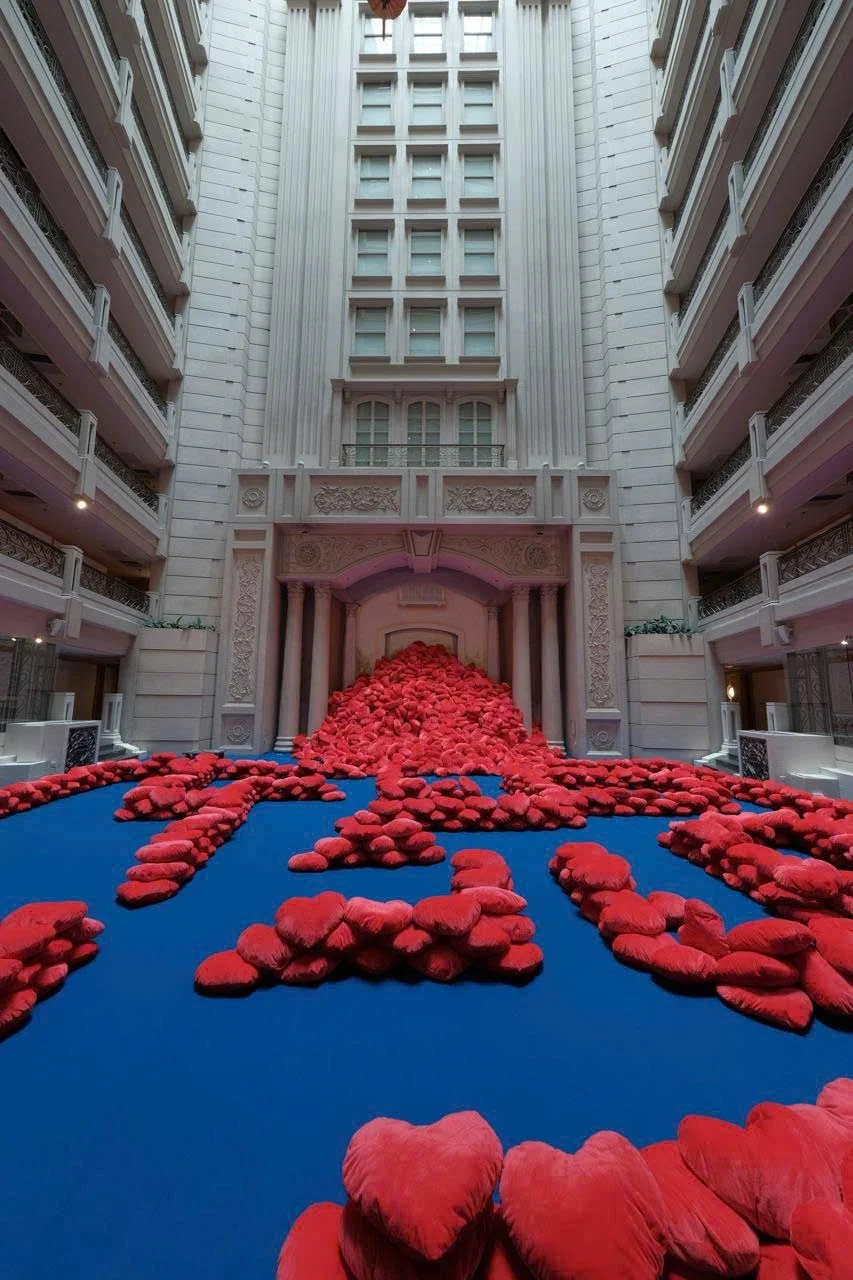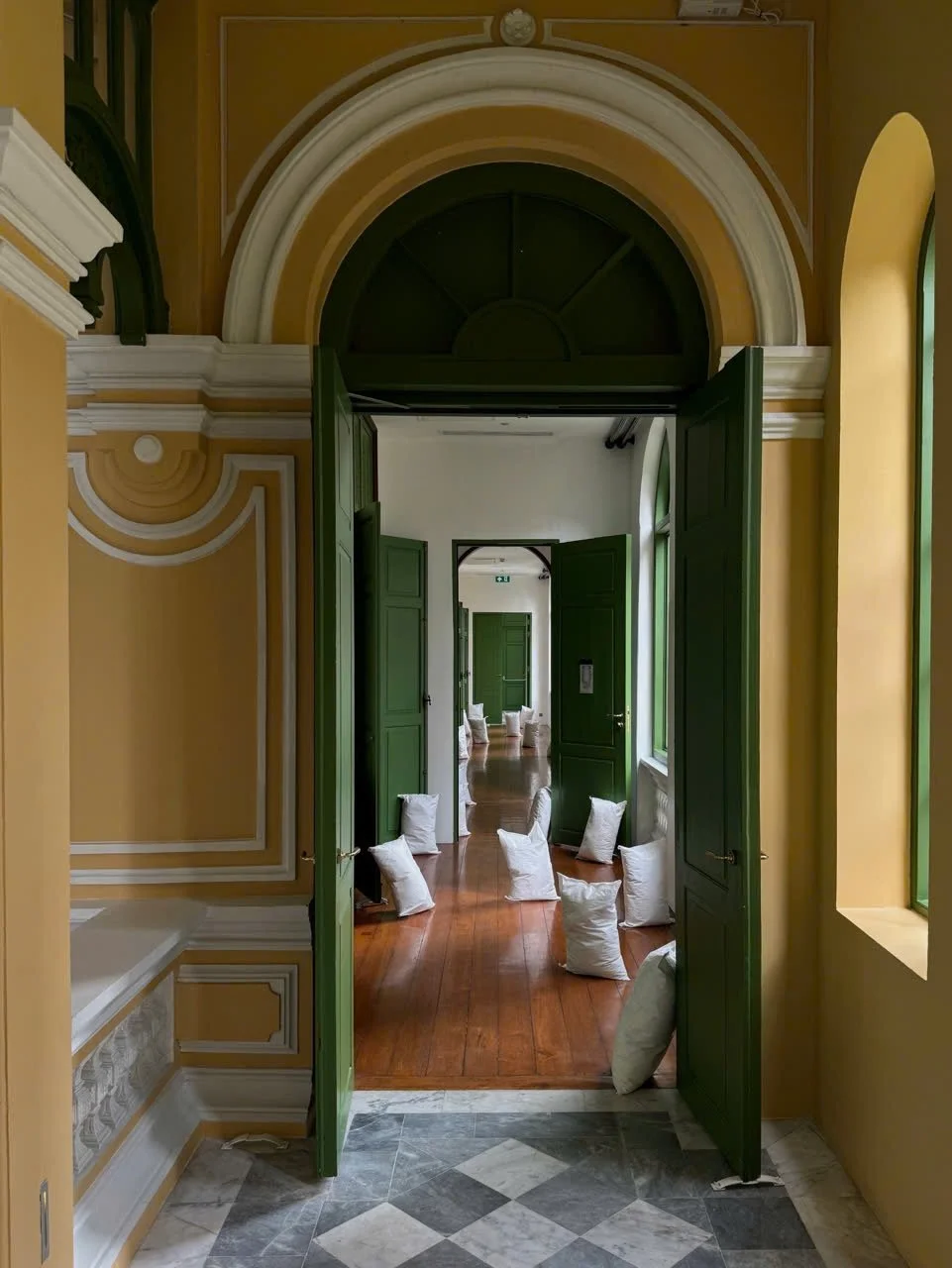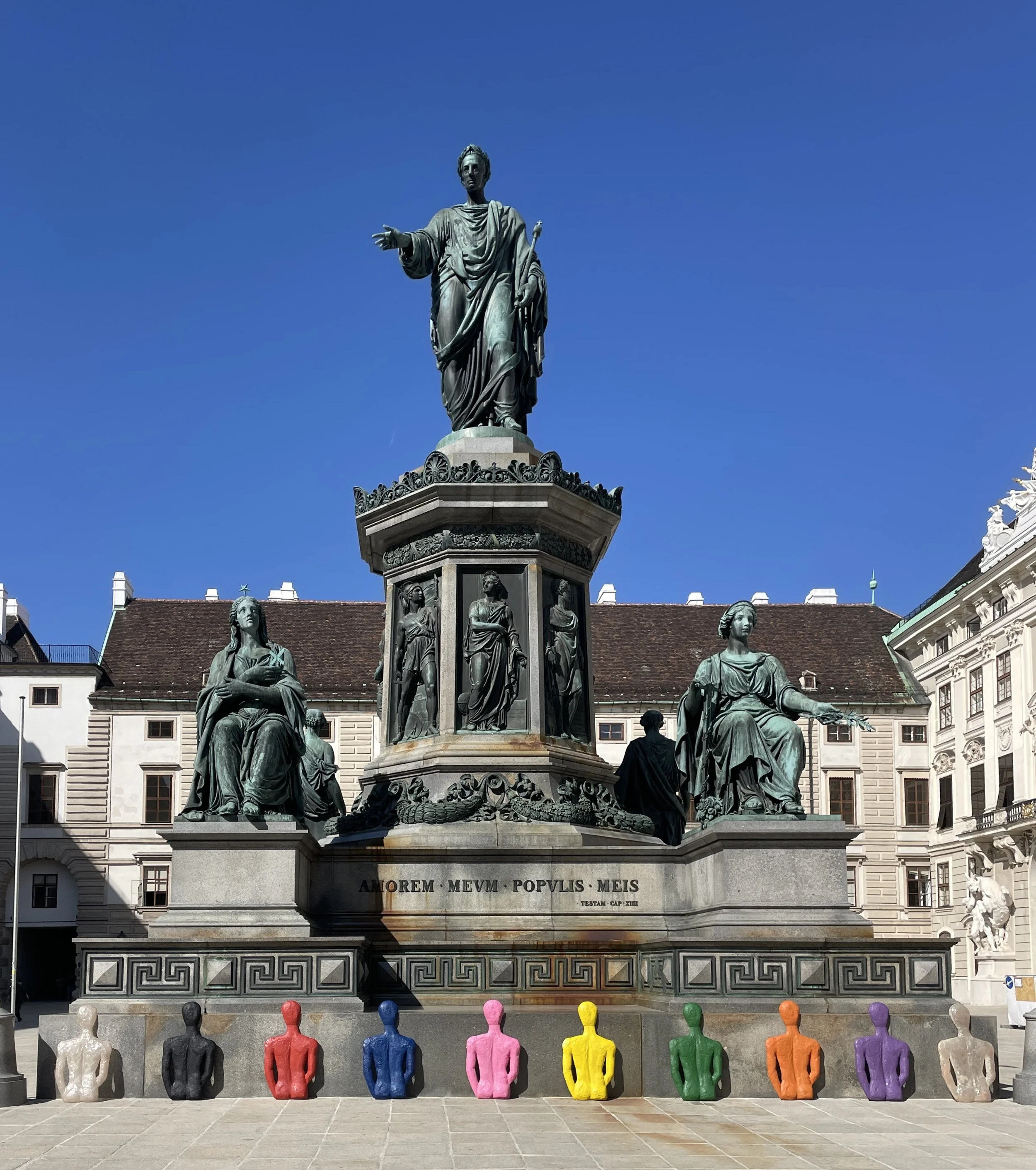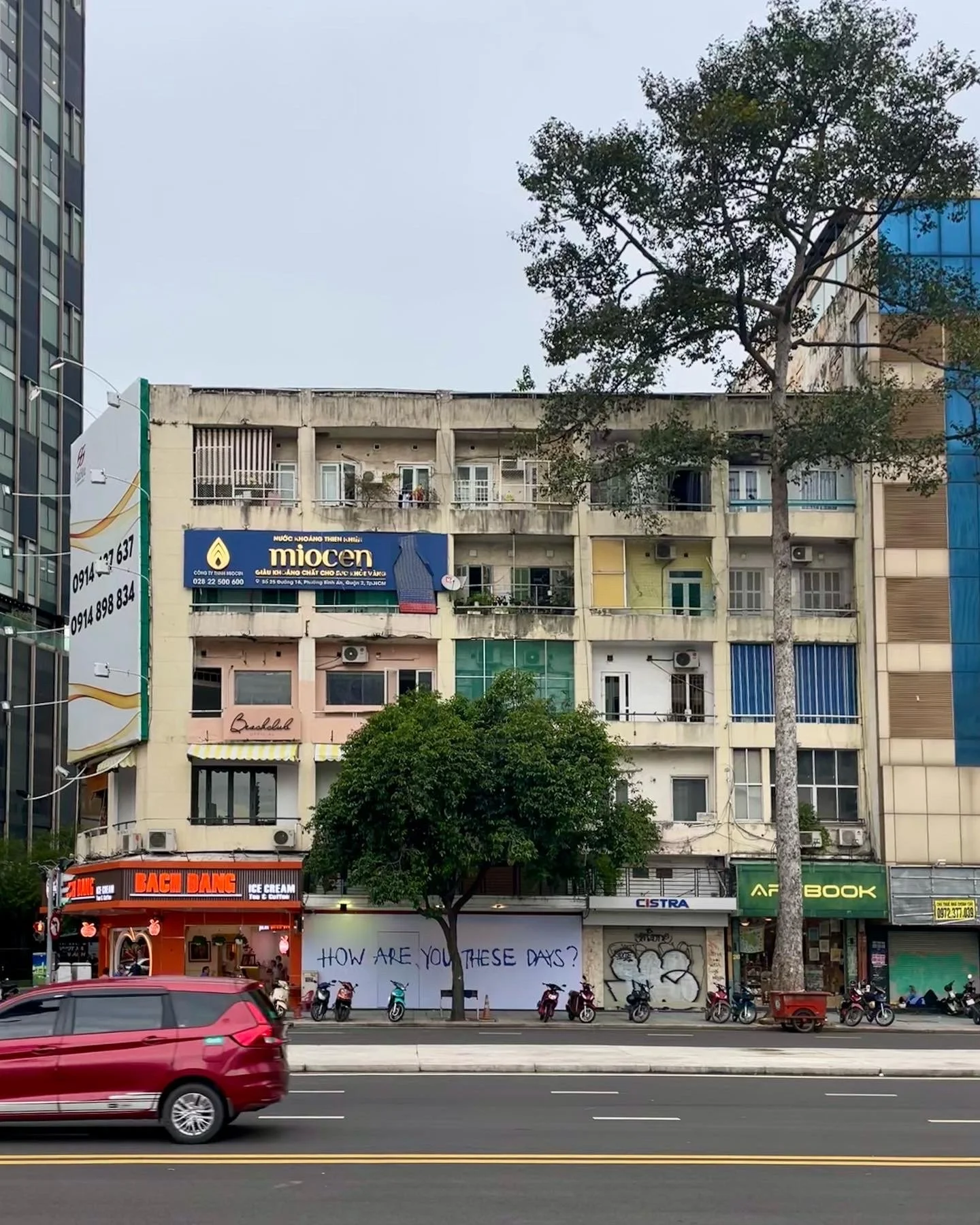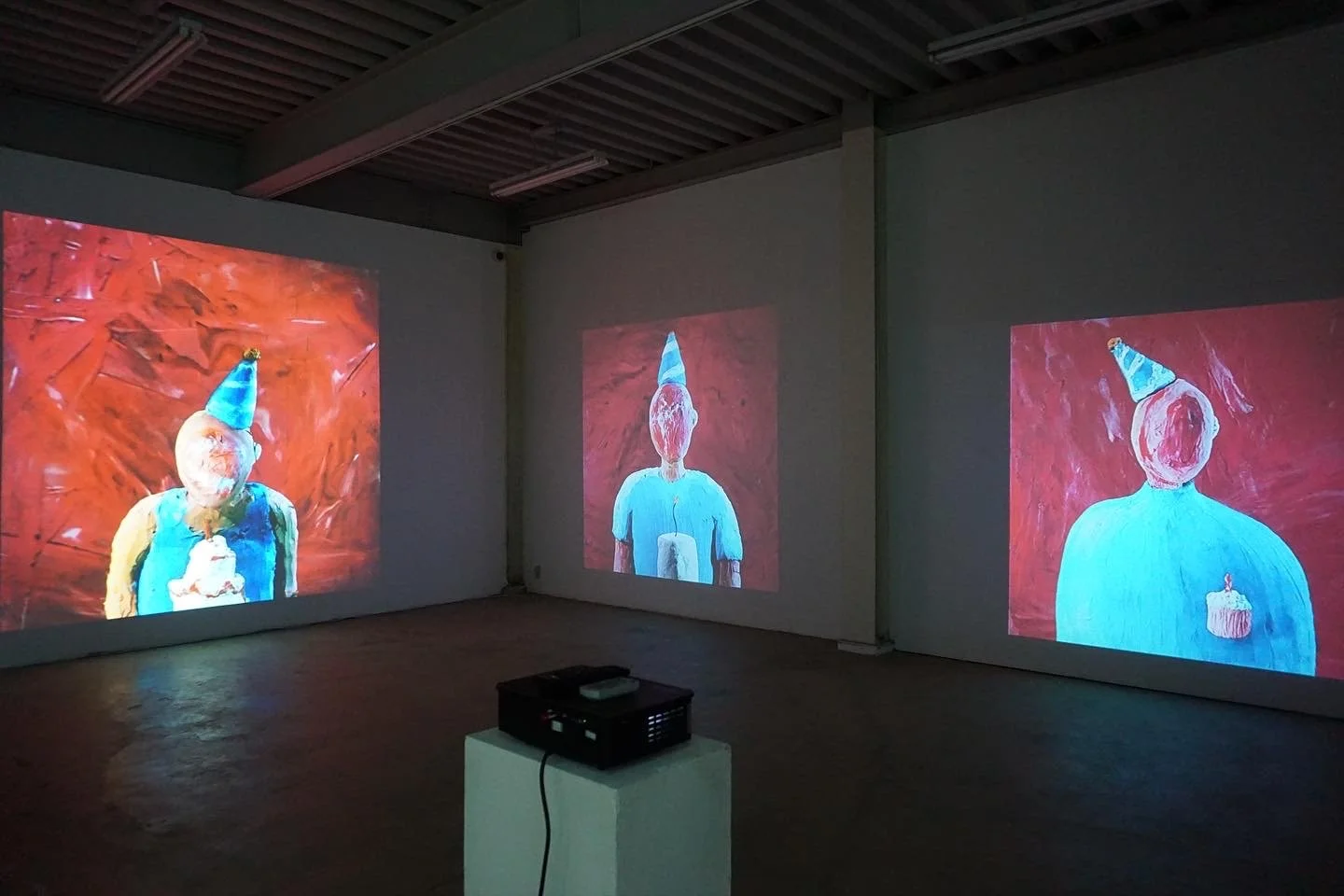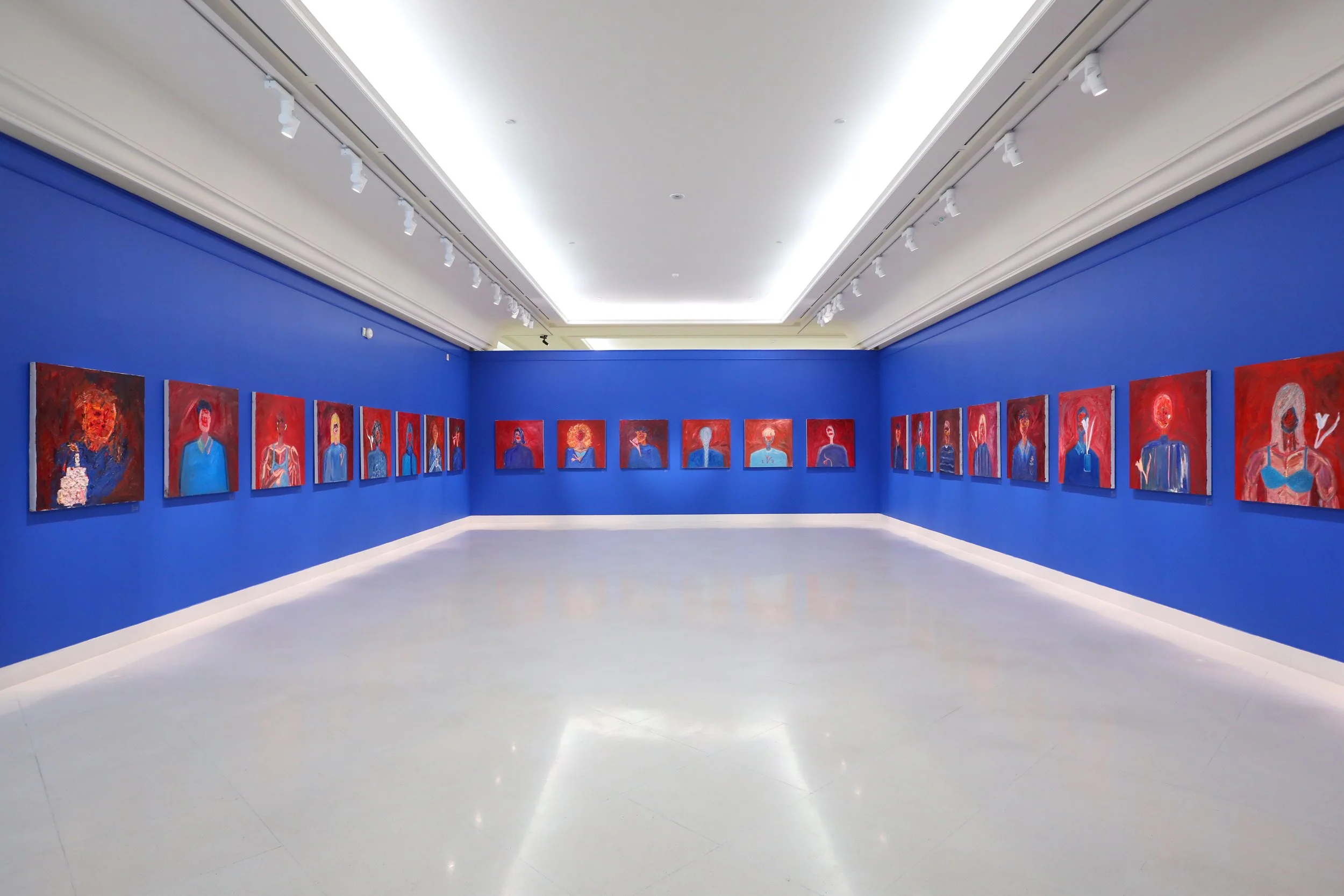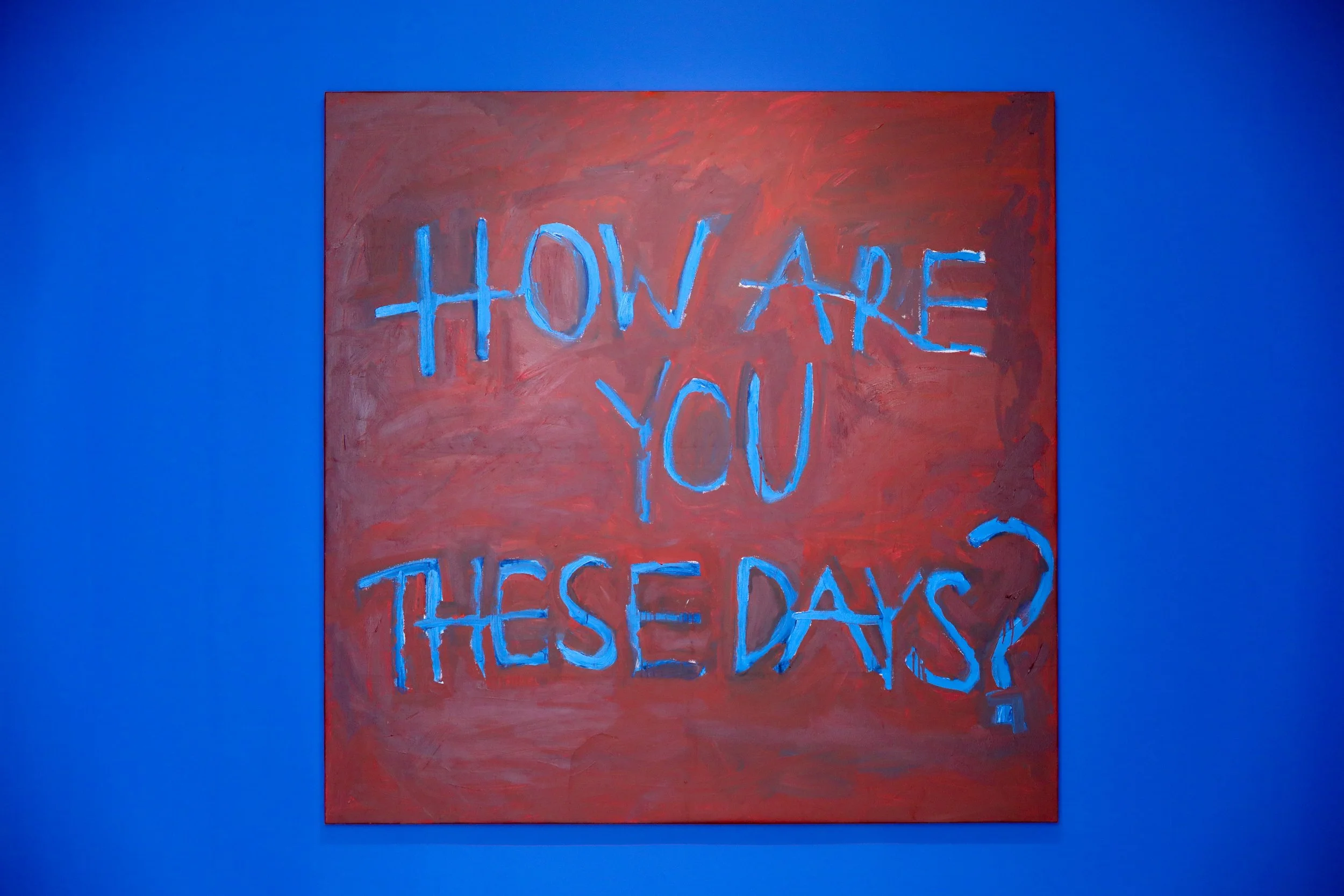Interview with Trần Quang Đại
Portrait by Manh Bi. Cover portrait by Laila Cohen.
Trần Quang Đại (b.1992) embarks on a global odyssey, carrying a suitcase brimming with life's precious moments. A prominent public figure, Dai's academic background includes a graduation from ULAW HCMC in IP Law and making his way to be a lawyer at Judicial Academy. Presently, he utilizes the medium of memory as a means of expression, providing us with a glimpse into the imprinted imperfections of coexisting memories.
His ongoing performance practice, embodied in the poignant question "How are you these days?", serves as the artist's voyage into the realm of art. Đại’s artistic endeavors intertwine with the realm of non- profit art therapy, enriching his journey with a profound impact on both himself and those who engage with his installations.
Through a series of solo exhibitions and immersive encounters, he delves deep into the psychological realm, where repetitive questioning elicits distinct responses time and time again, uncovering the very essence of being. "How are you these days?" has captivated audiences with its perpetual journey, inspired by the simplicity and childlike essence of the micro to the macro universe.
Your portraits, characterized by their non-figurative faces, present a unique interplay between detachment and intimacy. What drives your choice of subjects, and can you delve into the intricate process of abstracting their faces while still retaining an essence that allows viewers to establish a personal connection?
Faces reveal too much and too little at once. I choose semi-abstracted portraits because I want to move beyond the individual, to see the human being in essence—without labels or features that define us. By removing them, I invite viewers to find the person behind their own emotions. The connection, then, isn’t just to the subject but to themselves, an encounter with the universal.
Transitioning from a background in Intellectual Property Law to becoming a full-time artist is quite a significant shift. How has your legal education and experience influenced your artistic philosophy and practice, especially in terms of addressing themes such as identity, authenticity, and ownership in your work?
Law teaches precision, boundaries, the weight of ownership. In art, I challenge those boundaries. Who owns a memory, a face, or an identity? My legal practice gave me tools to explore the nature of identity—what is yours, what is mine? I now see identity as fluid, shared, and in constant flux. This perspective feeds into my art, where I blur the lines between individual and collective experience.
The recurring question "How are you these days?" forms a cornerstone of your artistic exploration. Can you provide a deeper analysis of how this repetitive inquiry serves as a tool for both introspection and audience engagement, and what varying responses or reflections it has prompted throughout your exhibitions?
How are you these days?" is simple, but it asks us to stop and confront our present state. The responses vary—sometimes joy, sometimes silence. In mindfulness, we observe without judgment, and this question serves the same purpose. It’s less about the answer and more about the pause, the self-reflection it triggers. Through this inquiry, I’ve learned that we are all seeking something, even if we can’t name it. Each time I ask it, I am reminded that our internal landscapes shift constantly, much like my own artistic journey.
Your art is often described as eschewing traditional techniques and theories in favor of embracing the rawness of unfiltered emotions. How do you navigate the tension between this raw emotional expression and the technical discipline required to convey such powerful sentiments through your medium?
Art, like life, requires balance. I let the emotions guide me, but the discipline comes in shaping those emotions into form. As in law, where passion needs reason, my art demands both freedom and restraint. The technical aspect is there to hold the emotion steady, to give it clarity, ensuring the emotion does not overwhelm, allowing the viewer to access the work’s full spectrum.
As the first Vietnamese artist to have a solo exhibition at MOCA Bangkok, you hold a pioneering role in the international recognition of Vietnamese contemporary art. How do you perceive the current global reception of Vietnamese art, and what challenges and opportunities do you foresee for Vietnamese artists on the international stage?
Vietnamese art is being seen, but there is still a journey ahead. We are breaking free from preconceived ideas, moving from traditional to contemporary. The challenge lies in being understood, not just seen. The opportunity is in our stories—rich, deep, universal. Vietnamese artists now have the world as an audience; it’s time to speak.
In your exhibition "Love is all," you tackled the complex and multifaceted theme of love. Can you elaborate on the conceptual framework you employed for this exhibition, and discuss the diverse forms of love you sought to portray and the emotional responses you intended to evoke from your audience?
Love, in all its forms, is central to life. I approached it as something simple yet vast—fleeting but eternal. I wanted viewers to feel the spectrum of love, not just in grand gestures but in the quiet moments. These quiet moments—glances, gestures, silences—became the focal points in portraying the subtle language of love. The responses were personal—each person found a piece of their own love story reflected in the work, a mirror of their innermost self.
"Love is All" has also become a journey that moves across the world, with a non-profit purpose. I reach out to dreamers who believe in the beauty of dreams, inviting them to help turn these ideals into meaningful actions for those in need. It’s about weaving love into the fabric of our shared humanity, transforming it into something that touches lives beyond words.
Your work often intertwines personal memories with broader, collective experiences. How do you navigate the juxtaposition of these individual and shared memories in your art, and what strategies do you use to ensure that your personal narratives resonate on a universal level?
We are shaped by personal moments, but these moments resonate universally. I use my own experiences as a way into the human condition. The abstraction helps—by removing specifics, I leave space for others to step into the narrative, to see their own reflection in the work.
The ongoing nature of your project "How are you these days?" suggests a profound journey of artistic introspection. How has this continuous and repetitive questioning influenced your understanding of self and others, and in what ways has it contributed to your evolution as an artist both personally and professionally?
Repetition is a tool in mindfulness—it brings us back to the present. Each time I ask "How are you these days?" I’m reminded of how transient we are. It’s deepened my empathy, showing me that despite differences, we all seek meaning. This question has become a way for me to connect, to see others more clearly, and it continues to shape my practice as an artist.
Your extensive travels significantly inform your artistic practice. Can you discuss the ways in which different cultural contexts and environments have influenced your work? Additionally, can you share a specific anecdote or experience from your travels that has profoundly shaped a particular piece or series in your portfolio?
Travel has taught me deep gratitude. Being here on earth for the first time, I’ve learned to truly see, touch, feel and drink life. Traveling reveals the shared humanity beneath cultural differences. Each journey shows me how time can feel both long and short. We’re only here for a brief moment, and as an artist, I try to capture these moments and reflect them in my work.
I remember flying over Luxor, Egypt, above the Valley of the Kings at sunrise. The sunrise was short, but the memory of the kings and queens who once ruled endures much longer. Life doesn’t take sides—everything we do is our way of adding meaning to it. That moment made me wonder—how does time shape us? Where does time really exist? These thoughts stay with me, and I still ask, "How are you these days?"
Social media, particularly Instagram, has become a vital platform for artists to share their work and connect with a global audience. How do you balance the need for maintaining artistic integrity and authenticity with the demands of an online presence, and what strategies do you employ to engage meaningfully with your followers while navigating the digital landscape of the contemporary art world?
Social media is a tool, but it can be distracting. I try to stay mindful, sharing work that reflects my process without getting lost in the noise. Engagement, for me, is about authenticity—responding honestly, being present, just as in my art. It’s a space to connect, but it’s not the work itself. However, I remain cautious, as the constant flow of content can pull one away from being fully present. My focus remains on the art, on the present moment, even as I navigate the digital world. All is illusion.


